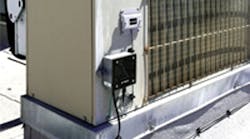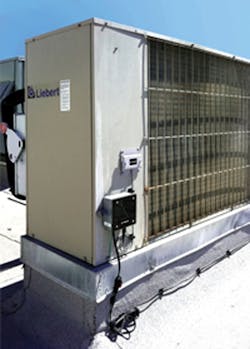Founded in 1994, Buxton is an analytics firm dedicated to helping organizations identify who their customers are, where those customers are located, and the value of those customers. In a 35-ft-by-15-ft room inside Buxton’s building in Fort Worth, Texas, servers valued at $1.5 million store the immense amount of data that is the basis of the company’s work.
If the temperature of the room spikes, servers can be shut down. The cost in lost business and customer goodwill, not to mention time and money in bringing the servers back online, can be significant.
The company had installed a temperature-monitoring system in the server room, but Seth Foley, Buxton’s senior systems administrator, had seen the system fail to work or sound an alarm too late for damage to be prevented. Additionally, he was concerned about the computer-room air conditioners (CRACs) malfunctioning overnight or on the weekend, when no one was present.
Bob Fulghum, former senior systems administrator, told Foley about cellular HVAC monitors from Virtjoule Inc., which can alert users to imminent failure or excessive cycling of CRACs via cell phone. Foley had Virtjoule install a monitor on each of the two Liebert split-system air conditioners on the roof.
Within weeks, the monitors proved their worth.
One Saturday, when no one was at work, the outside temperature soared to 105°F, and cottonwood seeds plugged a condenser coil on one of the air-conditioning units, causing a high-head-pressure fault. The air-conditioning unit failed. Within minutes, Foley received a call on his cell phone. Because he was alerted so quickly, he was able to get to the building, determine the issue, and get the units running again, avoiding a forced shutdown of the servers.
At the heart of a cellular HVAC monitor is a weatherproof sensor and microphone that stick to the side of a HVAC or refrigeration unit. Like a stethoscope, these components “listen” to the unit’s cycling patterns. The sensor relays what it hears to Virtjoule’s servers 24/7. If abnormal cycling is detected, an alert is sent to a designated cell phone, giving the recipient time to make needed repairs, avoiding a unit shutdown or further wasteful cycling.
Randy Cox of Virtjoule worked with Foley to specify the proper runtime behavior of the CRACs.
In addition to detecting imminent failure, excessive runtime, bad cycling behavior, and out-of-hours operation of HVACR units because of faulty parts, improperly programmed thermostats or building-automation systems, plugged condensers, frozen evaporators, broken condensers, or refrigerant leaks, cellular HVAC monitors continually provide insight into a unit’s performance, alerting owners and HVAC service companies to reconfigurations that will improve efficiency and extend a unit’s life. Buxton has used data generated by the monitors to adjust thermostats to balance loads. Buxton can load one of the two rooftop units in low-load situations to avoid short cycling both machines and reduce wear and tear, thereby extending the life of both units and avoiding premature replacement.
For Design Solutions author guidelines, call Scott Arnold, executive editor, at 216-931-9980, or write to him at [email protected].










